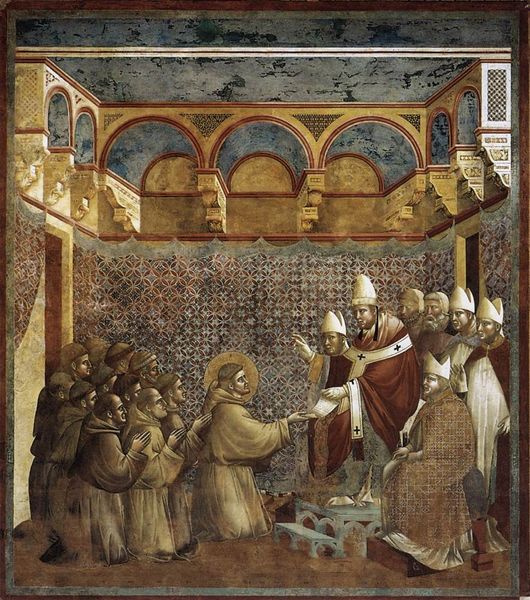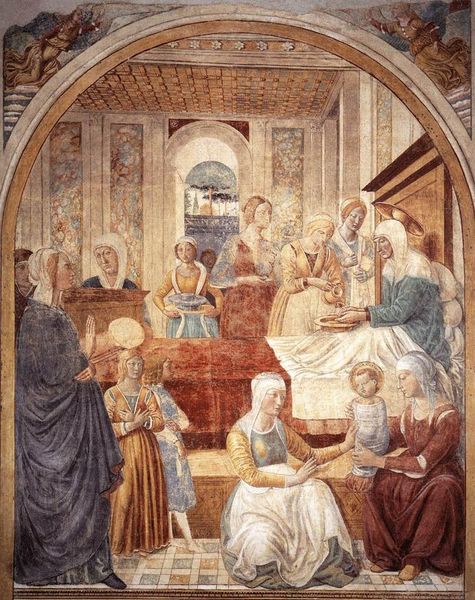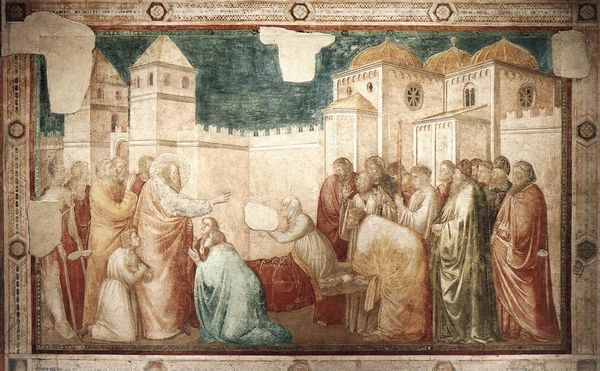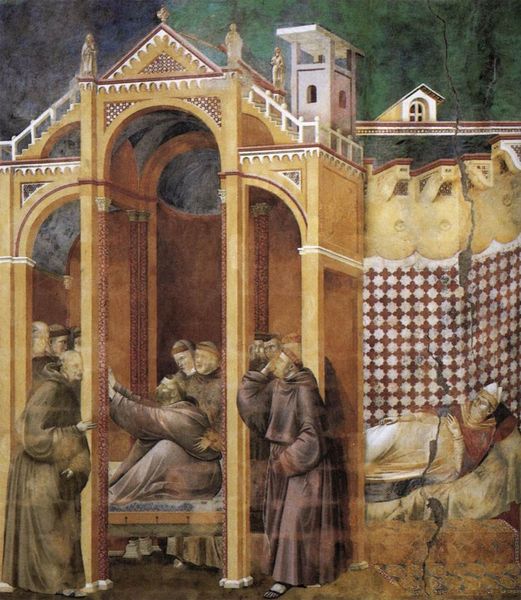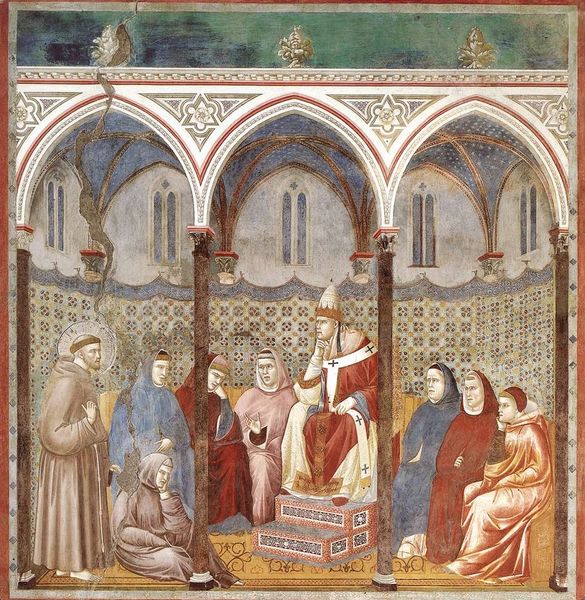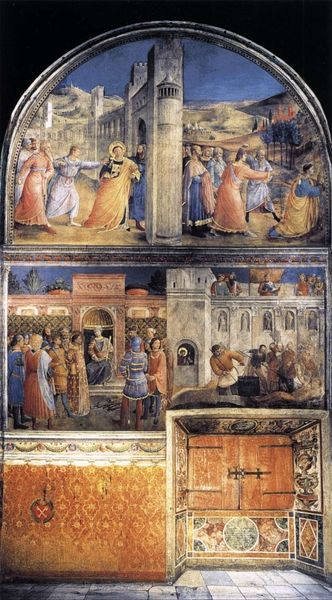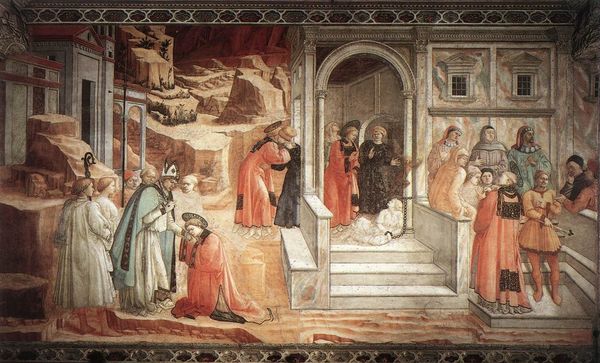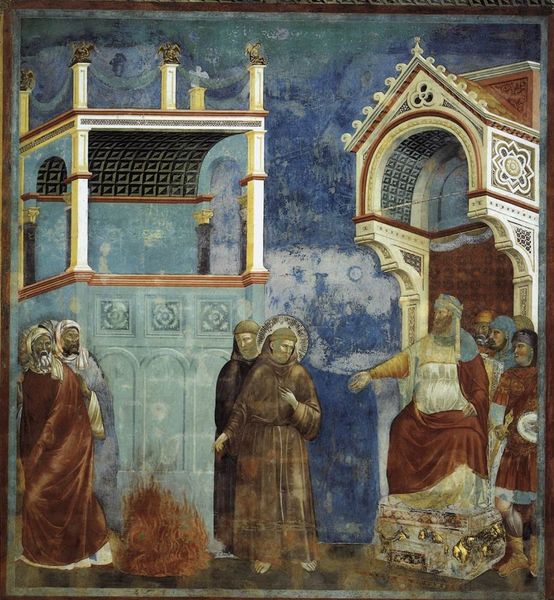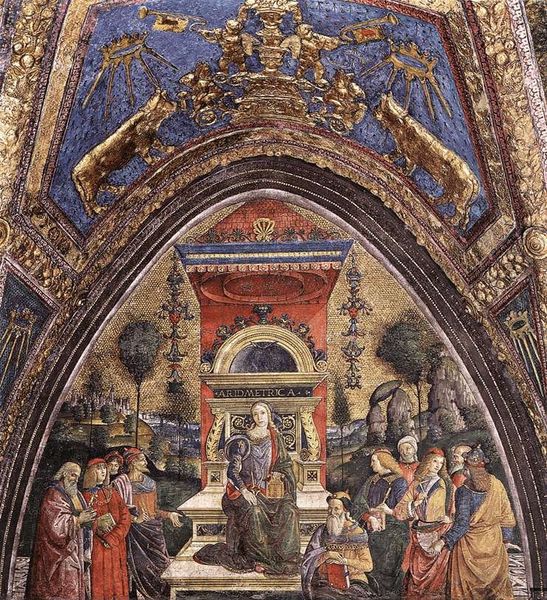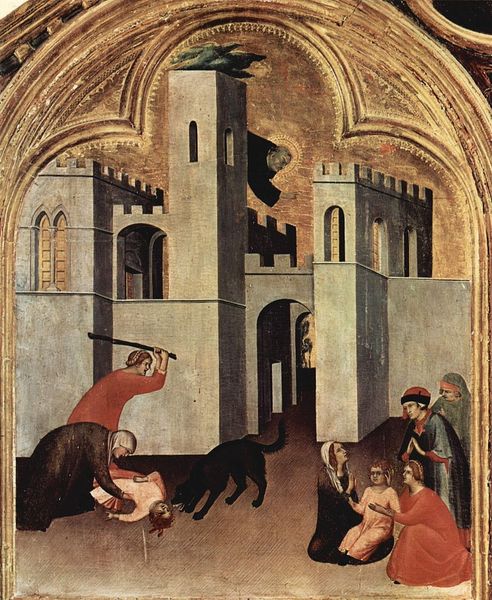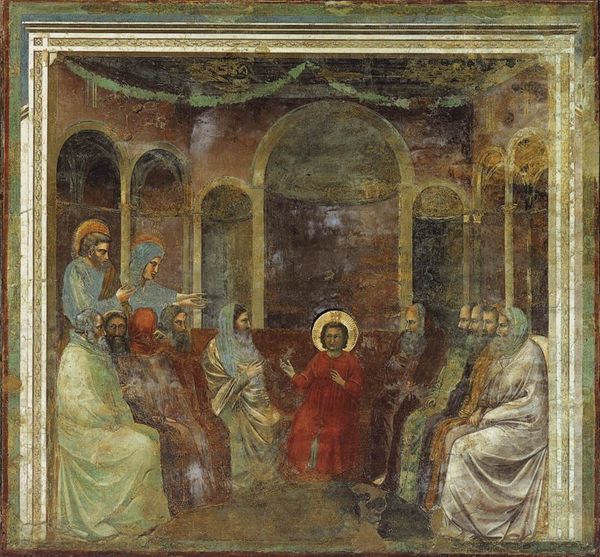
tempera, painting, fresco
#
medieval
#
tempera
#
painting
#
figuration
#
fresco
#
christianity
#
history-painting
#
italian-renaissance
#
christ
Dimensions: 270 x 230 cm
Copyright: Public domain
Editor: Here we have Giotto's "Dream of St. Gregory," a fresco painting dating back to around 1300. The figures in the foreground really capture my attention – their expressions are so compelling. How do you interpret this work within its historical context? Curator: This fresco is especially interesting because it exemplifies the shift in artistic patronage at the time. Works like this, commissioned for prominent religious spaces such as the Basilica of Saint Francis of Assisi, start taking on a didactic purpose, visualizing hagiographies. This wasn't just about devotional art; it was also about shaping public perception of the church's authority. How does this emphasis influence your interpretation of the figures you noted? Editor: It makes me see them as more staged, almost characters in a play. But I wonder, was Giotto intentionally creating a sort of political theater, or was it simply the natural evolution of religious art at the time? Curator: That's precisely the interesting tension, isn't it? On one hand, there’s certainly the genuine attempt to connect the viewer with religious narrative and doctrine, made palatable and human via Giotto’s skills. However, considering who would have been viewing these frescos – the wealthy, powerful, educated, as well as pilgrims, what purpose would they have served? Can we separate devotional messaging from what appears like papal propaganda? Editor: So the politics of the imagery are perhaps inseparable from the spirituality they’re trying to convey? I’ll never look at medieval art the same way again! Curator: Precisely! It's crucial to consider art as deeply embedded within these layers of patronage, public role and intention, beyond pure aesthetics.
Comments
No comments
Be the first to comment and join the conversation on the ultimate creative platform.
